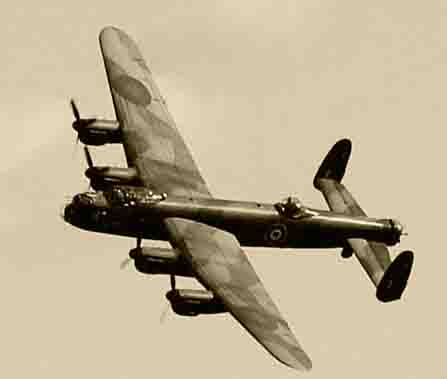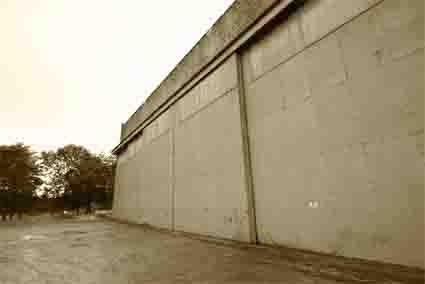
Airport Syerston
Syerston was at the outbreak of World War II an airfield under development and located ten kilometers north-east of the A46 between Nottingham-Newark road and the River Trent. Work started in 1938, but the airport was not completed until late 1940. This had been the standard specification with the camp of permanent building grouped close to the A46.Type J two hangars for the repair and maintenance of aircraft. From December 1941 until 5 May 1942 the base closed, while a concrete runway was built with two T2 hangars. Later, another hangar T2 and a B1 hangar built on the site.
Hangar T2
The airport was reopened in 1942 and came hiena several squadrons of Avro Lancaster aircraft.

Bomber: Lancaster
On November 17, 1943 left the operational squadrons. The airport was currently training the crew of the bombers used. The training was in January 1944 as "The Lancaster Finishing School" known.
Other Info
The station, assigned to Group 1, was first proposed in December 1940 by a familiarization Nos. 304 and 305 Squadrons, largely manned by the Poles, who were transferred from Bramcote, where both units were formed in August. Both squadrons flew to Wellington and made their first operation Syerston the night of 25-26 April 1941, with the aim of the attack on the oil storage in Rotterdam. Syerston July was transferred to No 5 Group 1 Group at Lindholme, Polish squadrons leave for last. The 408ste Squadron, a unit RCAF (Royal Canadian Air Force) from within the former base Bramcote came, were like the Poles, when they first arrived on Syerston yet operational. Their first attack was on 11/12 August 1941, the Rotterdam docks were again targeted, as Poland. In December of that year, the 408 Squadron with "The Handley Page Hampden" moved to Balderton.
© 2010 - SMALLEST WAR CEMETERY IN EUROPA - All rights reserved
